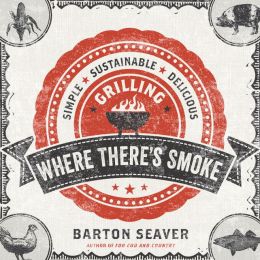We are big fans of Ambrose Heath and pigs. The End.
No, there is more. We love cookbooks and food because, like so many things, everything old is new again. Really, who hasn't dislocated a shoulder patting themselves on the back for serving pig ears? Don't get me wrong, we love Fergus Henderson but he did not "invent" nose-to-tail eating. Poor folks did. If H.G. Wells traveled back in time and asked those poor folks whether they would rather be eating pig ears or steak, they would probably chosen the latter. If you told them that you paid $12 for a pig ear sandwich, they would laugh at you. Truthfully, they would probably rob you. And feed you to the pigs.
In 1952, a full decade before Fergus Henderson was even conceived, Ambrose Heath wrote a quintessential nose-to-tail book on the pig: Pig Cooking & Curing. There are recipes for Deviled Pig's Liver, Pig Ear Soup(and you thought they were only for sandwiches), Baked Pig Cheek, Pig Tail in Lentils, and so much more. Heath includes all the meaty middle of the pig as well, loins, legs, chops, hams, and sausage.
By now you know that cookbooks of this era have only vague directions for recipes. But here is a favorite. It has the date 1806 in parentheses, so my guess is Heath found this recipe and passed it on. I love it for the title: Loin of Pork to Goosify. I can honestly say we have have never seen the word "goosify" before. At first I thought it was a way to make one's pork more like goose. But that doesn't seem to be the case. In modern parlance, "goosify" means to have an old lady grab your ass. By "old" one would need to be over 30, 25 in some video arcades. But we can find no reference as to why this leg of pork is being "goosified" or whether "goosified" is the past tense for "goosify" as we are sure it has nothing to do with grabassing pork (or whether "grabassing" is a word). We are in uncharted territory. Here is the recipe so you too, can gossify your leg o'pork.
Leg of Pork, to Goosify (1806)Calling all Lexicographers out there -- what did "goosify" mean in 1806?
Score your pork; stuff it with sage, onions, pepper and salt, a few crumbs and a little butter; stuff it at the shank end. It will take two hours roasting as a good fire. Serve it with apple sauce.
In the meantime, we saw this on Facebook and while we
Twenty years ago we had Johnny Cash, Bob Hope and Steve Jobs.
Now we have no Cash, no Hope, and no Jobs
PLEASE
Don't let Kevin Bacon die







